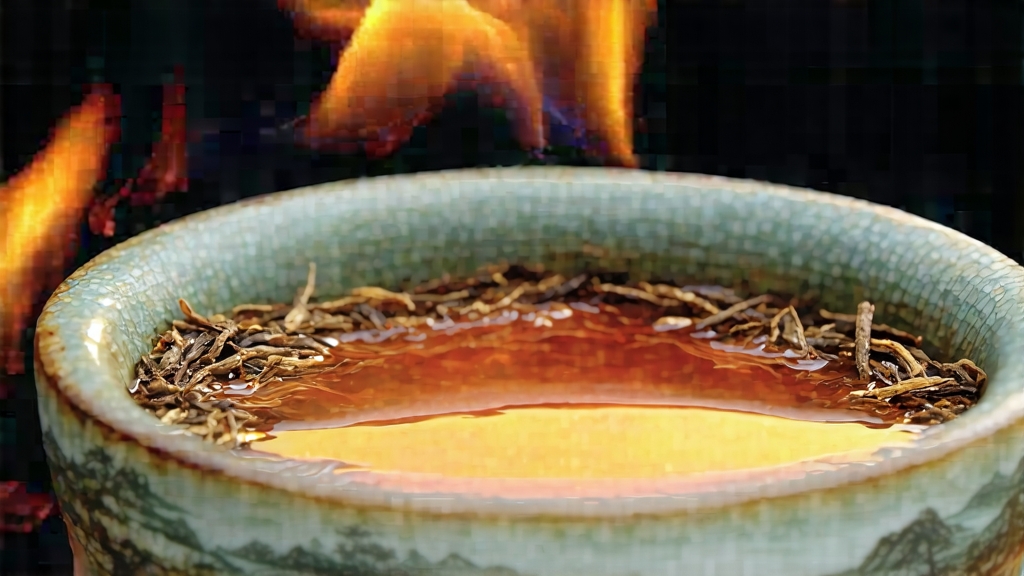
Long before English tea clippers raced across the oceans and Victorian drawing rooms rang with the clink of bone china, a small village deep in China’s Wuyi Mountains was already perfecting the art of black tea. Today that village—Tongmu—guards the original gene pool of what the world now calls black tea, yet the Chinese still name it hong cha, “red tea,” for the color of its liquor. The tea is Lapsang Souchong, and every leaf of black tea on earth can trace its lineage, directly or indirectly, back to the smoke-wreathed fir-wood workshops of this granite canyon.
History: From Ming-Era Accident to Global Obsession
Local lore fixes the birth year around 1567, late Ming dynasty, when green-tea makers, delayed by passing armies, hastily dried their leaves over fresh pine embers to meet market deadlines. The resulting tea, perfumed with resinous smoke, sold spectacularly well in the port of Xiamen and soon reached Dutch and English merchants who christened it “Bohea.” By the early 1600s the Dutch East India Company listed “Lapsang” (from the Fuzhou dialect la-sang, “pine wood”) as a luxury item; by 1662 Catherine of Braganza’s dowry chest carried it to London, launching the British tea craze. When Robert Fortune smuggled tea plants and craftsmen to India in 1848, he carried Tongmu scions; thus the very cultivars that created Assam and Ceylon black teas were offspring of Lapsang Souchong.
Terroir: One Canyon, Two Microclimates
Tongmu lies inside a national nature reserve at 27° N latitude, where the Wuyi range funnels moist subtropical air into a cool gorge. Day-night temperature swings of 15 °C slow leaf growth, concentrating amino acids, while mineral-rich granite soils impart a flinty sweetness. The canyon splits into two micro-zones: the cooler, higher “Zhengshan” core (600–1,200 m) where only indigenous Xiao Ye Zhong (small-leaf) bushes are permitted, and the outer “Waishan” foothills planted with larger-leaf hybrids. Only tea picked within the 60 km² core may bear the protected designation “Zheng Shan Xiao Zhong,” the legal name for authentic Lapsang Souchong.
Cultivars & Harvest Calendar
The heirloom cultivar is Xiao Ye Zhong, a shrub whose leaves are barely 3 cm long yet bristle with fine hairs that trap aromatic resins during smoking. Spring plucking begins when 5 % of buds show the famous “fish-leaf” pale scale—usually between Qingming and Guyu (early April). One kilo of finished tea demands 55,000 buds, all picked before 10 a.m. while dew still guards against bruising. A secondary autumn harvest in late September yields a lighter, fruitier style, but connoisseurs prize the spring batch for its layered smoke and honey.
Craft: Eight Steps That Dance With Fire
Withering: Fresh leaves are spread 3 cm deep on bamboo trays inside wooden lofts warmed by gentle pine embers (28–30 °C, 70 % humidity) for 8–10 hours. The smoke is not yet dense; its role is to coax moisture from the leaf while imprinting a whisper of resin.
Rolling: Once leaves turn jade-green and limp, they are rolled for 45 minutes under 8 kg pressure to rupture cells and release enzymes.
Oxidation: In cedar-lined boxes the twisted leaves rest 3–4 hours at 24 °C, turning from olive to copper. Mastery lies in stopping the oxidation the instant the leaf edge emits a sweet apple note.
Pan-firing: A 220 °C wok arrests oxidation in 3 minutes; the sudden heat caramelizes sugars, creating maltol—the compound that later marries with smoke.
Re-rolling & Shaping: Leaves are re-rolled into tight baroque curls that can withstand the forthcoming smoke storm.
Smoke-drying: The signature step. On the ground floor of the three-storey workshop, fresh pinus massoniana and Chinese red pine logs smoulder below 80 °C. Tea sits on sieves two metres above, absorbing aromatic volatiles—